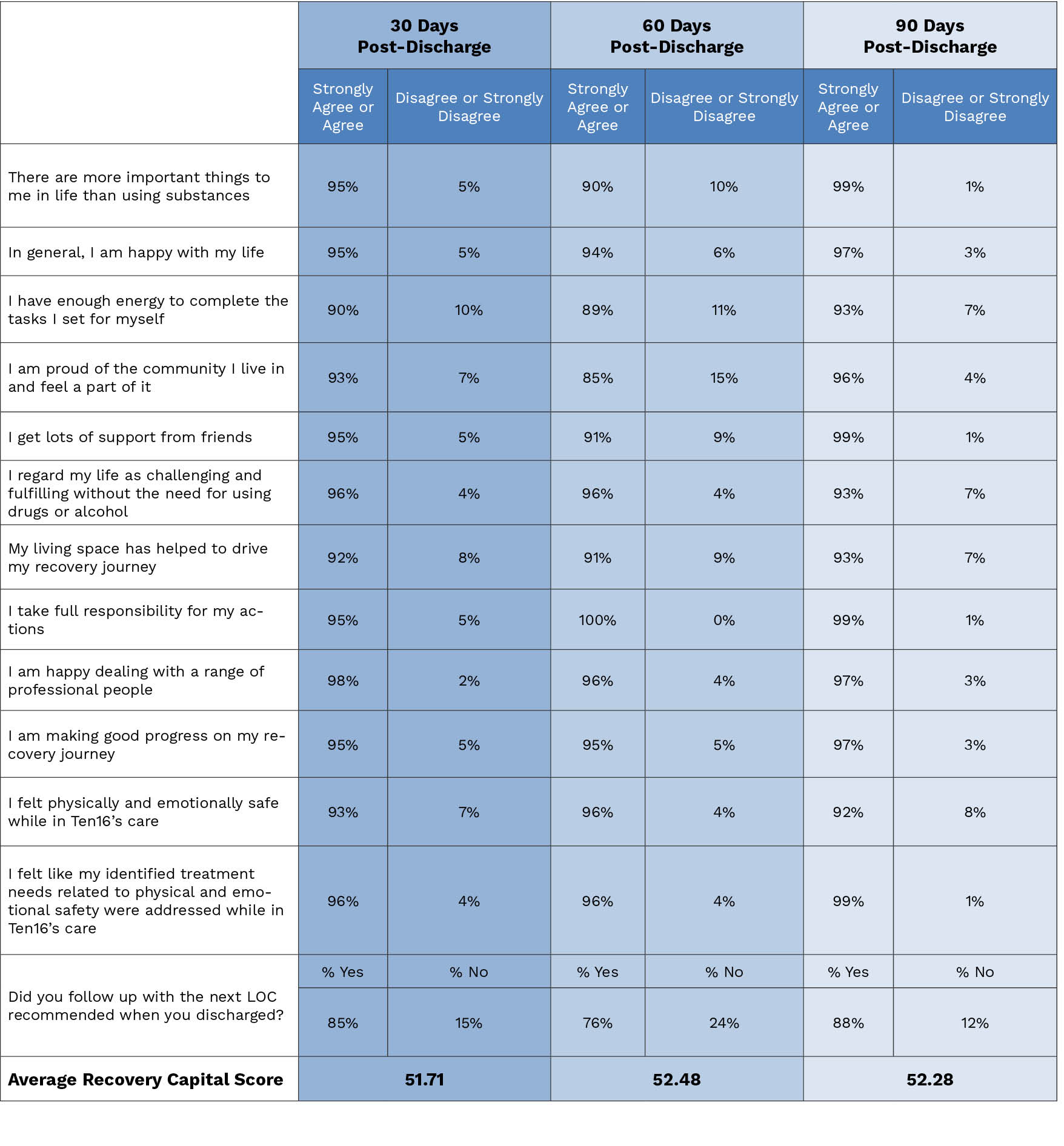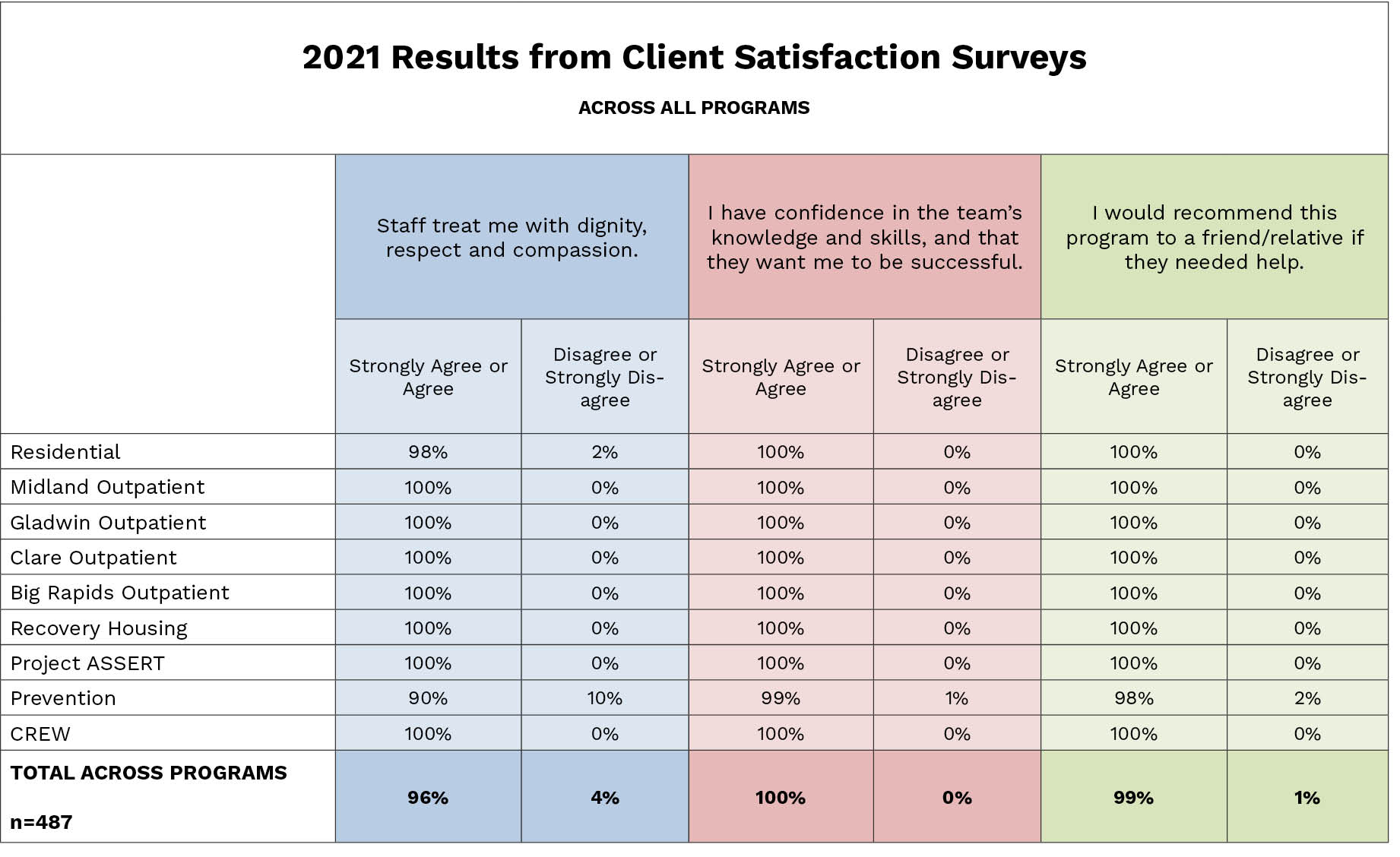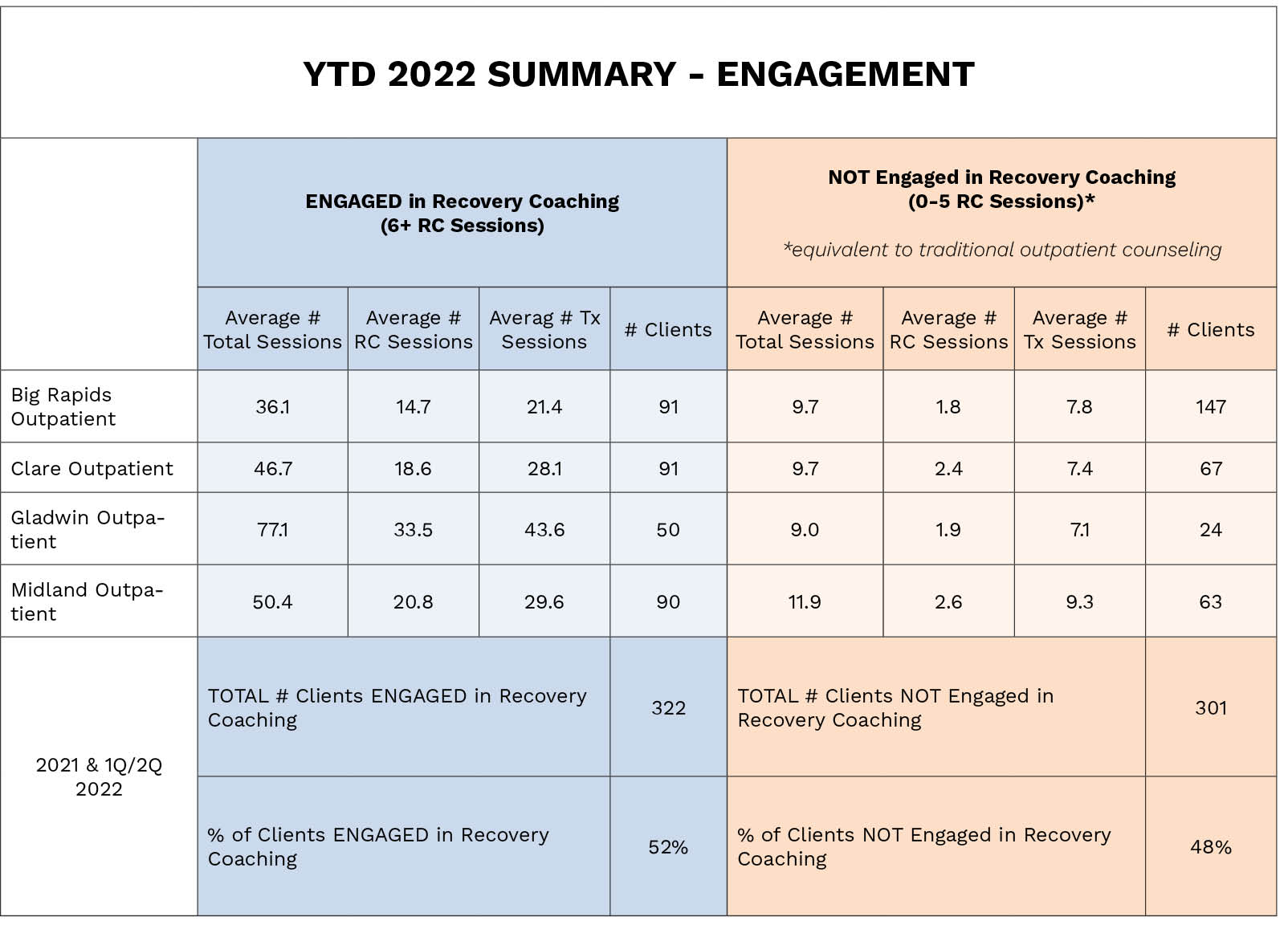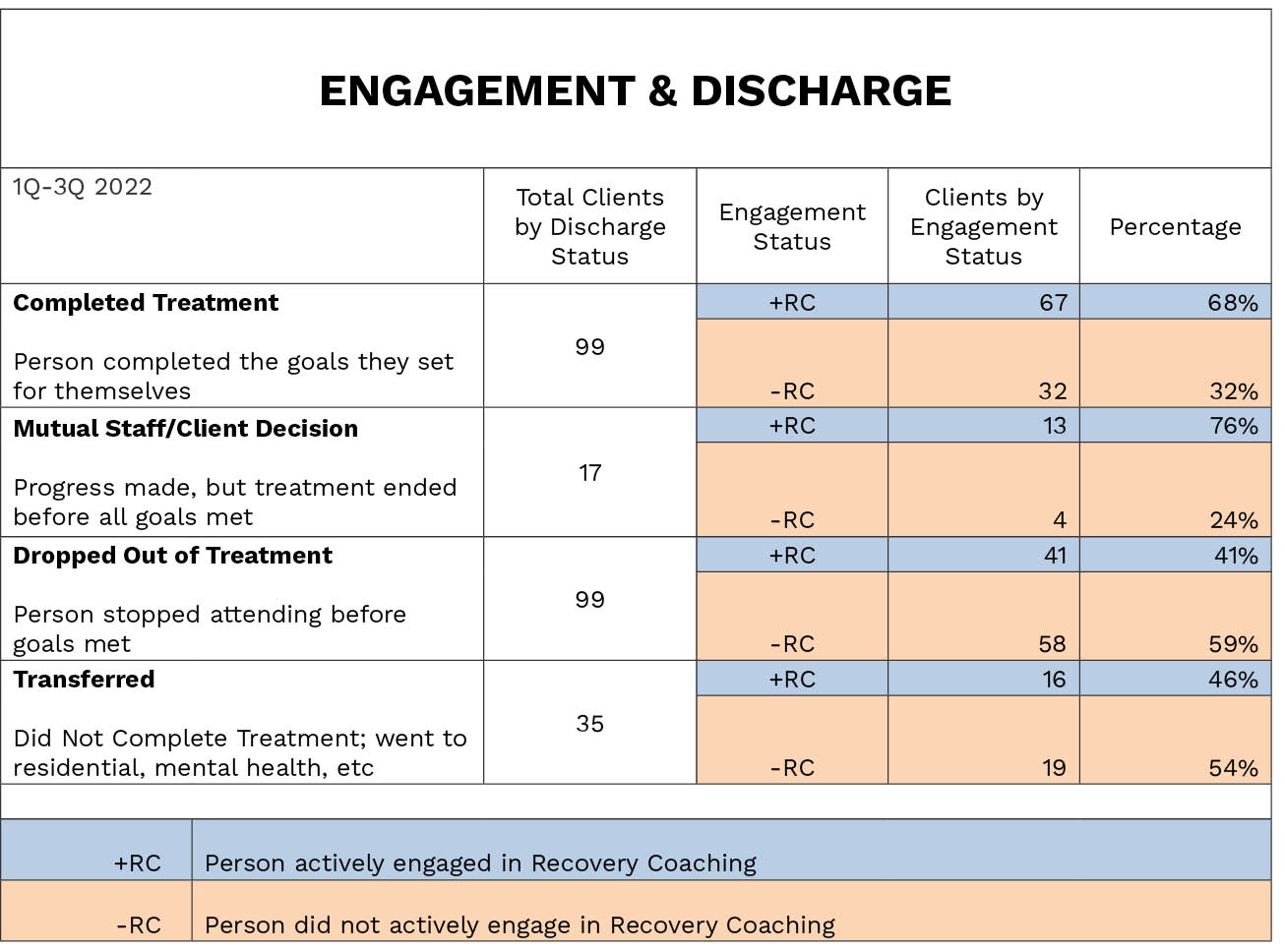At Ten16 Recovery Network, we want to have a lasting connection with the people that we work with. We want to make sure that they are doing well, moving forward. We contact them 90 days after they have left our care to see how they are doing.
Here’s how some of our recent clients responded.

A strong recovery is about coping with the joys and pain of life—on life’s terms. Studies show that between 40-60% of people relapse within 30 days of leaving SUD treatment, and up to 85% relapse within the first year.
Knowing this, a large focus of our work is to help people have an understanding of the things that might trigger a return to use, and knowing how to manage those triggers, cravings, emotions and situations in a healthy way. That is the particular benefit of working with a Recovery Coach, who can teach those recovery skills, while the clinical staff work on the internal healing of trauma.
It is not just about whether someone has been able to sustain their recovery during that time period. As a chronic, relapsing disease that someone is learning to manage, a return to use, whether a slip or relapse, might happen. It is equally as important for a person return to a recovering lifestyle on their own by applying the tools and skills that they learned while at Ten16.
We have also started measuring a person’s Recovery Capital during their time with us. If you’re not familiar with the term, it is the strength and breadth of resources that someone can draw on to help them sustain their recovery. It is a combination of personal, family/social and community resources like meaningful work and a support system. Research shows that a strong degree of Recovery Capital is the largest predictor of sustained recovery. The tool we use has a max score of 60.

 Contact
Contact FAQs
FAQs


